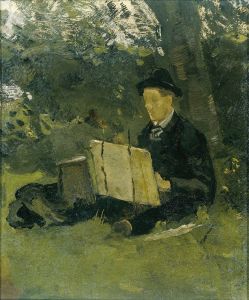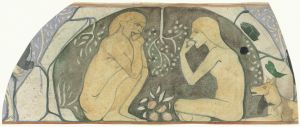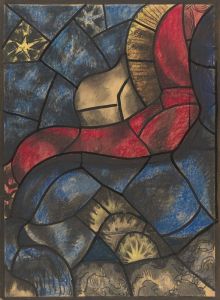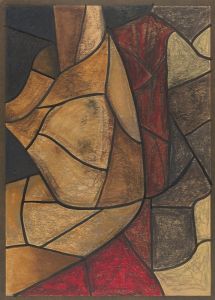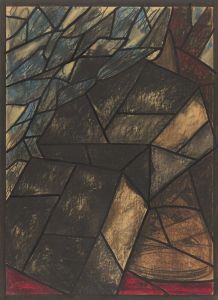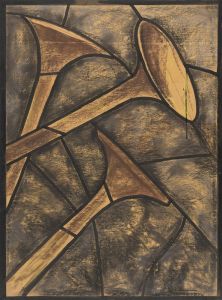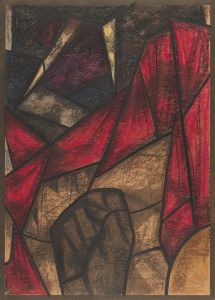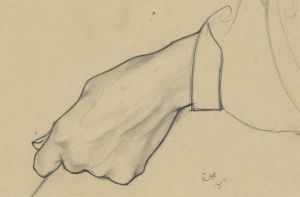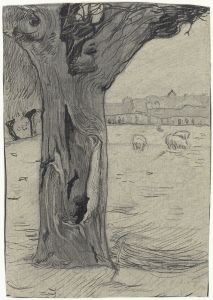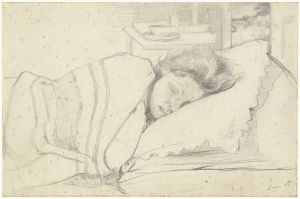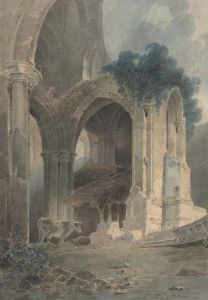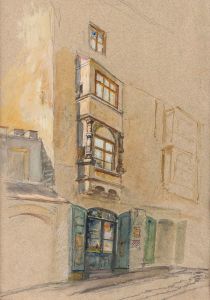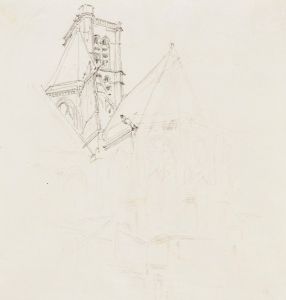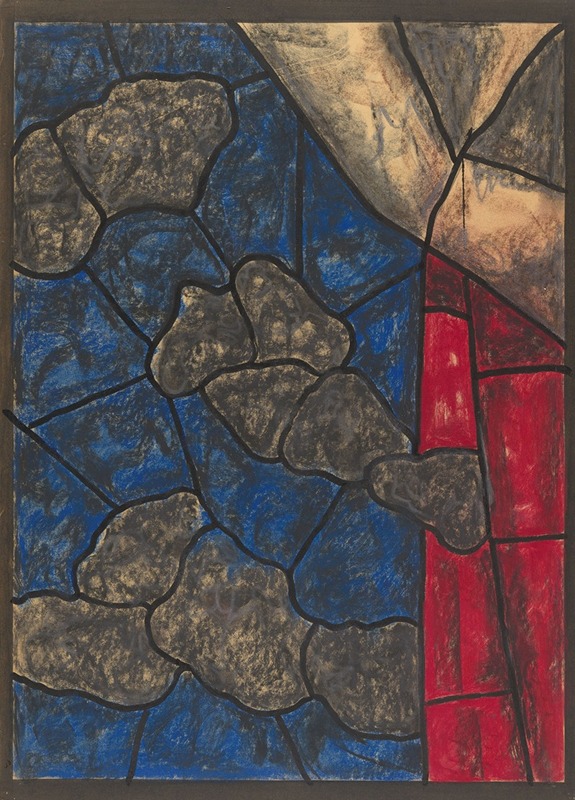
Ontwerp voor raam in het Noordertransept in de Dom te Utrecht 39
A hand-painted replica of Richard Nicolaüs Roland Holst’s masterpiece Ontwerp voor raam in het Noordertransept in de Dom te Utrecht 39, meticulously crafted by professional artists to capture the true essence of the original. Each piece is created with museum-quality canvas and rare mineral pigments, carefully painted by experienced artists with delicate brushstrokes and rich, layered colors to perfectly recreate the texture of the original artwork. Unlike machine-printed reproductions, this hand-painted version brings the painting to life, infused with the artist’s emotions and skill in every stroke. Whether for personal collection or home decoration, it instantly elevates the artistic atmosphere of any space.
Richard Nicolaüs Roland Holst was a prominent Dutch artist known for his contributions to the Arts and Crafts movement in the Netherlands. Born on December 4, 1868, in Amsterdam, he became a significant figure in the Dutch art scene during the late 19th and early 20th centuries. Roland Holst was not only a painter but also a designer and a writer, and he played a crucial role in the development of decorative arts in the Netherlands.
One of his notable works is the "Ontwerp voor raam in het Noordertransept in de Dom te Utrecht 39," which translates to "Design for a Window in the North Transept of the Dom in Utrecht 39." This work is a design for a stained glass window intended for the Dom Church, also known as St. Martin's Cathedral, in Utrecht. The Dom Church is a Gothic-style cathedral that has been a central religious site in the Netherlands for centuries, and it is renowned for its architectural beauty and historical significance.
Roland Holst's design for the window reflects his deep engagement with the Arts and Crafts movement, which emphasized traditional craftsmanship, the use of simple forms, and the incorporation of natural motifs. His work often featured symbolic and allegorical elements, and he was known for his ability to integrate these themes into his designs seamlessly.
The design for the window in the Dom Church would have been part of a broader effort to restore and enhance the cathedral's interior, which has undergone various renovations and restorations over the years. Stained glass windows are a significant feature of Gothic architecture, serving both aesthetic and didactic purposes by depicting biblical stories and saints, thus enhancing the spiritual atmosphere of the space.
Roland Holst's contribution to the Dom Church project is a testament to his skill as a designer and his commitment to the integration of art and architecture. His work in stained glass design is characterized by a harmonious balance of color and form, often incorporating intricate patterns and figures that convey a sense of movement and life.
Throughout his career, Roland Holst was deeply influenced by his contemporaries and the broader artistic movements of his time. He was associated with the Amsterdam School, a style of architecture that emerged in the early 20th century, known for its expressive forms and decorative details. His work in various media, including painting, graphic design, and stained glass, reflects a commitment to the ideals of the Arts and Crafts movement, which sought to bring art into everyday life and elevate the quality of craftsmanship.
In addition to his artistic achievements, Roland Holst was also an influential teacher and writer. He served as a professor at the Rijksakademie van Beeldende Kunsten in Amsterdam, where he influenced a generation of Dutch artists. His writings on art and society further demonstrate his engagement with the cultural and social issues of his time.
Richard Nicolaüs Roland Holst passed away on December 31, 1938, leaving behind a legacy of artistic innovation and a body of work that continues to be celebrated for its beauty and craftsmanship. His design for the window in the Dom Church in Utrecht remains a significant example of his contribution to the field of decorative arts and his ability to blend artistic vision with architectural context.





